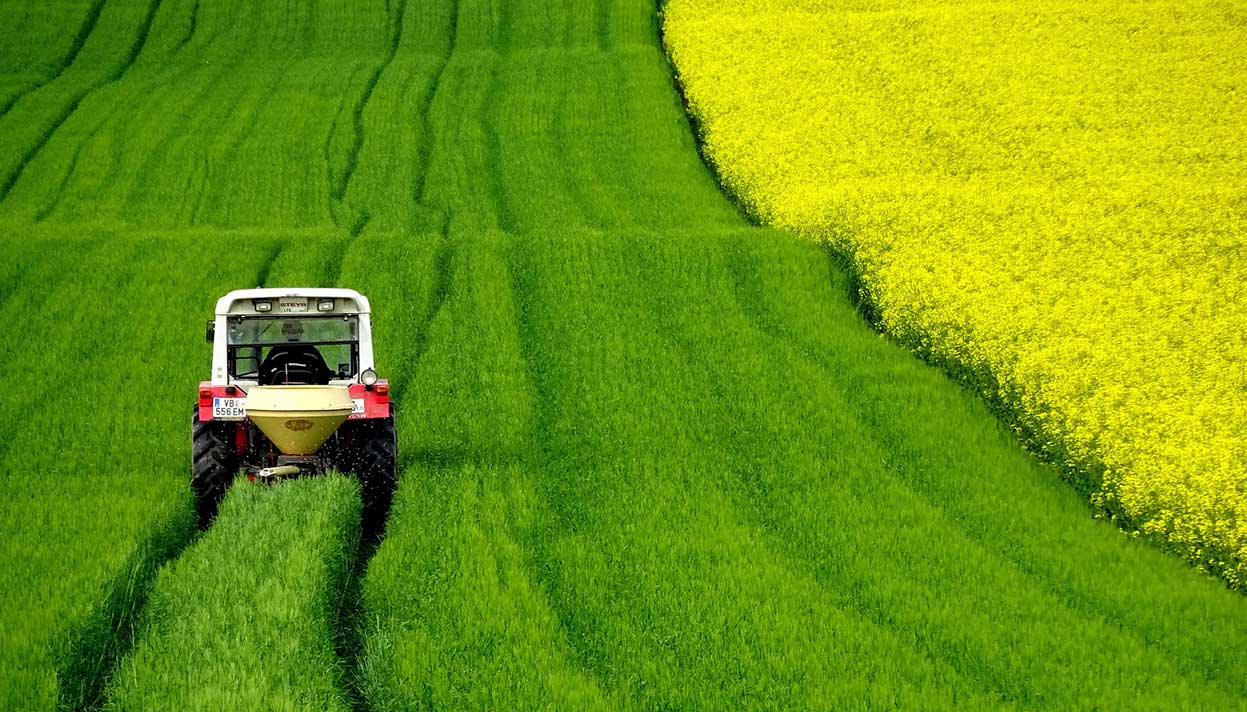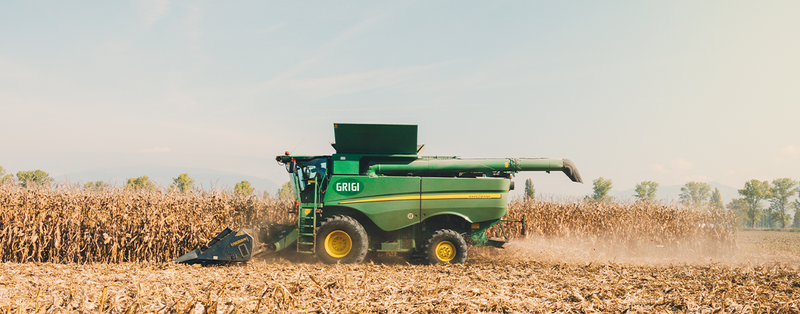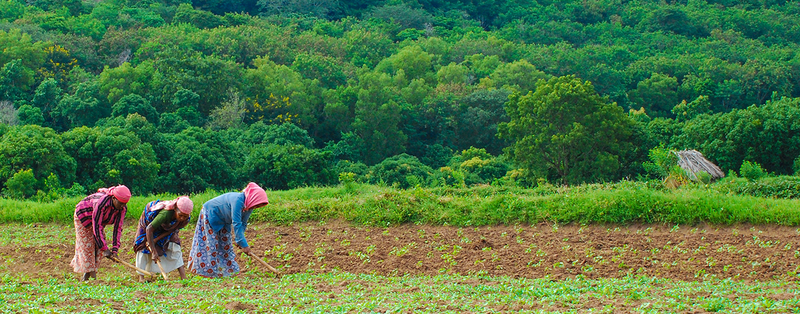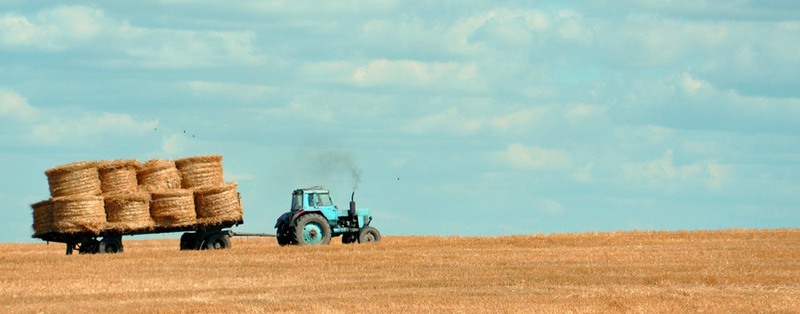
The development of agriculture was a watershed moment in humanity. Humans ability to engineer the environment to generate enough food to sustain massive population growth was the first profound change in the relationship between fully-modern humans and the environment. The advent of agriculture kickstarted a wider range of advancements from the use of fire and prepared food to self-driving machinery.
Agriculture has moved us forward us so far in 12,000 years, but we are now at a turning point. And with a global population projection of 9.7 billion people by 2050, agricultural production will need to increase by at least 70% from current levels to serve nutritional trends. Now more than ever, the pressure on farmers to produce nutritious products is putting our planet’s health under even more stress.
New advancements in technologies ranging from robotics and drones to computer vision software have completely transformed modern agriculture. Farmers now have access to tools that will help them meet the demands of our world’s ever-increasing population.
Farm automation, often associated with “smart farming”, is technology that makes farms more efficient and automates the crop or livestock production cycle. An increasing number of companies are working on robotics innovation to develop drones, autonomous tractors, robotic harvesters, automatic watering, and seeding robots. Although these technologies are fairly new, the industry has seen an increasing number of traditional agriculture companies adopt farm automation into their processes.

The primary goal of farm automation technology is to cover easier, mundane tasks. Here are some major technologies that are most commonly being utilized by farms.
Harvesting fruits and vegetables have always proven to be a difficult problem to automate. Harvest robots must be gentle with the produce to avoid bruising and damage. Agrobot has successfully developed the first robot for gently harvesting strawberries, no matter where and how they are grown. From a flexible mobile platform, up to 24 robotics manipulators work together to pick the fruit which meets the farmer’s quality standard.
Another company, Abundant Robotics, is the world’s first commercial robotic apple harvest. Their machines handle fragile fruits by using a vacuum instead of any claw or hand-like graspers to pull apples from the branch.
Autonomous tractors can be controlled remotely or even pre-programmed to give full autonomy to a producer. Rabbit Tractor’s autonomous tractor delivers value to row crop farmers not just through a reduction in labor costs, but through increased efficiency across operations and increased yield. Tractor automation kits are even being developed by Bear Flag Robotics that makes automation more accessible for farmers by affordably retrofitting existing tractors with cutting edge driverless technology and implement control.
Robotics developed for seeding and weeding can target specific crop areas. In seeding, this can easily reduce labor and mundane tasks on the farm. Weeding robotics can be incredibly accurate and reduce pesticide usage by 90% with computer vision. Blue River Technology employs computer vision and robotics technologies to precisely spray herbicides only where needed and with exactly what’s needed. This gives farmers a new way to control and prevent herbicide-resistant weeds. ecoRobotix is another company that produces a weeding robot -- this is the first ever completely autonomous machine for a more ecological and economical weeding of row crows, meadows, and intercropping cultures.
Drones can be used to monitor conditions remotely and even apply fertilizers, pesticides, and other treatments from above. They can also quickly and cost-effectively identify problem areas with imagery and infrared analysis to help farmers diagnose issues early on. American Robotics is developing a fully autonomous “Robot-as-a-service” with an autonomous drone, base station, and analytics platform that provides insights to growers at resolutions, frequencies, and speeds never before possible.

Farm automation technology addresses major issues like a rising global population, farm labor shortages, and changing consumer preferences. The benefits of automating traditional farming processes are monumental.
Consumers preferences are shifting towards organic and sustainably-produced products. With automation technology, produce reaches consumers faster, fresher, and more sustainably. Increase in productivity from automation increases the yield and rate of production, therefore reducing costs for consumers.
Labor is over 50% of the cost to grow a farm and 55% of farmers say they are impacted by labor shortages. Because of this, 31% of farmers are moving to less labor-intensive crops. However, there is huge potential with harvest robots. Routine tasks can be automated with robotics technology, reducing labor costs and manpower needed amidst a labor shortage in the agriculture industry. A single strawberry robot harvester has the potential to pick a 25-acre area in 3 days and replace 30 farm workers.
Farm automation practices can make agriculture more profitable while also reducing the ecological footprint of farming at the same time. Site-specific application software can reduce the amount of pesticides and fertilizer used while also reducing greenhouse gas emissions.

Still, there are challenges of farm automation that must be overcome. High costs to adopt robotic technologies presents a huge barrier to entry for farmers, especially in developing countries. For example, robotic planters must carry water or pesticides with significant weight; the hardware must be built differently, which results in higher costs to make it a larger size. Technical issues and breakdown of equipment also present high costs to fix for such specialized equipment. In order to fully utilize farm automation, farmers will need to combine their knowledge and experience with these new technologies.
We are only at the early stages of farm automation technology, but it will be able to transform agriculture. It offers a path towards sustainable and more efficient agriculture by advancements of technologies, production systems, and software. Every year, automation technology becomes more sophisticated, and what was cutting-edge just a few years ago will become commonplace and cost-effective soon. The human element will always be a fundamental aspect of managing a farm, but fully autonomous vehicles and farm equipment are coming.